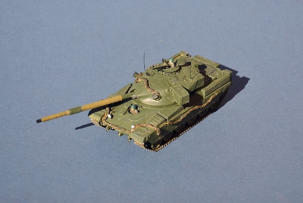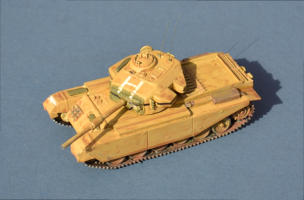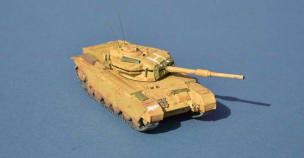
Gengriz The Dark Side

© 2024 Gengriz.co.uk
A number of Imperial War Museum pictures are also used on this site under the IWM Non-Commercial Licence
British Cold War Tanks
The FV4201 Chieftain
& FV 401x Centurion
Two of the best known British post WW2 tanks are the Centurion and the Chieftain. Both saw long service, with some Centurion variants still in active service around the world in supporting roles today.FV 4201 Chieftain
The Chieftain was the main British Army battle tank from the 1960s unitil the 1980s. Designed for a defensive war on the Central European front, it prioritised protection and firepower over maneoverability. A multi fuel power plant, very low hull profile (to enable digging in to hull down positions) enhanced survivability, whilst the very powerful L11A5 120mm rifled gun was lethal against all known threats at that period. British Chieftains did not see combat, but in the hands of the Iranians and particularly the Kuwaiti army, it proved very effective, although the infamously unreliable power plant resulted in frequent breakdowns. When it entered into service, the Chieftain was, arguably, the best protected tank in the world, but improvements in anti-tank weaponry and new types of armour soon overtook it. This is the Airfix model (probably 1/76), representing a fairly early Chieftain Mk.2 of the of Royal Armoured Corps in Germany during th eearly 1970s.FV 401x Centurion
The Centurion is widely acknowledged as one of the most successful tank designs ever, combining the hard won experience of WW2 to produce the first ever true Main Battle Tank, a classic design that saw first-line service from 1945 until the end of the 20th Century, with converted Israeli Centurions deployed as recently as 2006 in Lebanon. Although designed for the central european front, Centurions saw their first combat during the Korean War, but it was in the desert that the Centurion earned its enduring reputation. In the hands of the Israeli Army, its devastatingly lethal performance against the Egyptians, Jordanians (who also operated the Centurion) and Syrians has become legend, but Centurions also saw combat with the British Army in Aden and Suez, the Australians in Vietnam, South Africans in Angola and with the Indian Army against Pakistan. Originally powered by a Rolls Royce Meteor petrol engine (a derivative of the famous Merlin), Israel modified its remaining Centurion based vehicles to take a modern diesel powerplant. Centurion Tanks of the 6th Royal Tank Regiment were landed from Tank Landing Ships at Port Said in November 1956, during the Anglo-French occupation of the Suez canal, Operation Musketeer. Marked with a white recognition "H" on their turret (for Operation Hamilcar, the original code- name for the invasion) and a black stripe around their turret, the tanks were hurriedly and rather crudely camouflaged in desert sand. This is the Airfix 1/76 kit, with scratch modifications to represent one of 6RTR’s tanks at Suez. Return to Main Battle Tank page Return to British Cold War page Return to Dark Side AFVs index page Return to Gengriz Modelling Index Page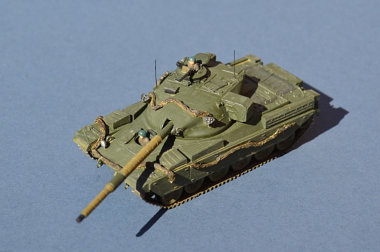
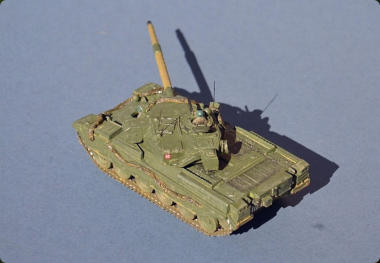
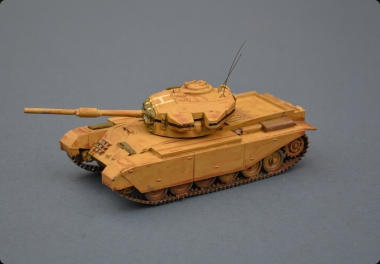
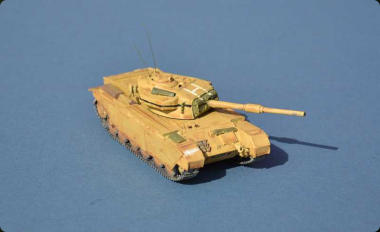

Gengriz The Dark Side

© 2023 Gengriz.co.uk
A number of Imperial War Museum pictures are also used
on this site under the IWM Non-Commercial Licence
British Cold War Tanks
The FV4201 Chieftain
& FV 401x Centurion
Two of the best known British post WW2 tanks are the Centurion and the Chieftain. Both saw long service, with some Centurion variants still in active service around the world in supporting roles today.FV 4201 Chieftain
The Chieftain was the main British Army battle tank from the 1960s unitil the 1980s. Designed for a defensive war on the Central European front, it prioritised protection and firepower over maneoverability. A multi fuel power plant, very low hull profile (to enable digging in to hull down positions) enhanced survivability, whilst the very powerful L11A5 120mm rifled gun was lethal against all known threats at that period. British Chieftains did not see combat, but in the hands of the Iranians and particularly the Kuwaiti army, it proved very effective, although the infamously unreliable power plant resulted in frequent breakdowns. When it entered into service, the Chieftain was, arguably, the best protected tank in the world, but improvements in anti-tank weaponry and new types of armour soon overtook it. This is the Airfix model (probably 1/76), representing a fairly early Chieftain Mk.2 of the of Royal Armoured Corps in Germany during th eearly 1970s.FV 401x Centurion
The Centurion is widely acknowledged as one of the most successful tank designs ever, combining the hard won experience of WW2 to produce the first ever true Main Battle Tank, a classic design that saw first-line service from 1945 until the end of the 20th Century, with converted Israeli Centurions deployed as recently as 2006 in Lebanon. Although designed for the central european front, Centurions saw their first combat during the Korean War, but it was in the desert that the Centurion earned its enduring reputation. In the hands of the Israeli Army, its devastatingly lethal performance against the Egyptians, Jordanians (who also operated the Centurion) and Syrians has become legend, but Centurions also saw combat with the British Army in Aden and Suez, the Australians in Vietnam, South Africans in Angola and with the Indian Army against Pakistan. Originally powered by a Rolls Royce Meteor petrol engine (a derivative of the famous Merlin), Israel modified its remaining Centurion based vehicles to take a modern diesel powerplant. Centurion Tanks of the 6th Royal Tank Regiment were landed from Tank Landing Ships at Port Said in November 1956, during the Anglo-French occupation of the Suez canal, Operation Musketeer. Marked with a white recognition "H" on their turret (for Operation Hamilcar, the original code-name for the invasion) and a black stripe around their turret, the tanks were hurriedly and rather crudely camouflaged in desert sand. This is the Airfix 1/76 kit, with scratch modifications to represent one of 6RTR’s tanks at Suez. Return to Main Battle Tank page Return to British Cold War page Return to Dark Side AFVs index page Return to Gengriz Modelling Index Page
